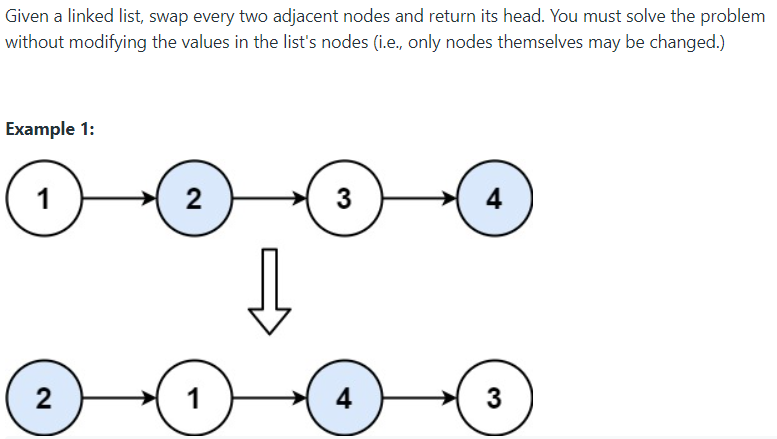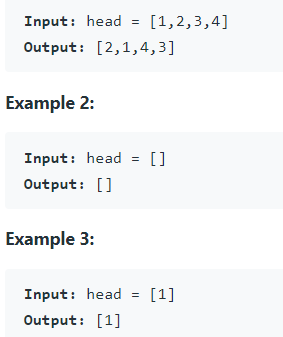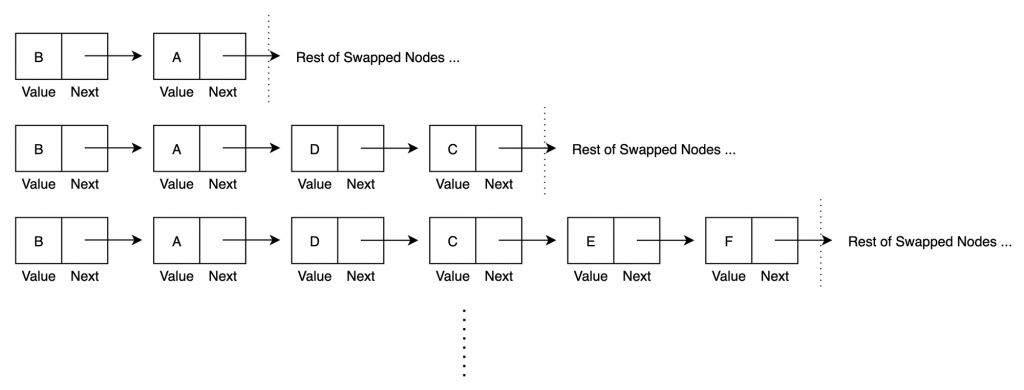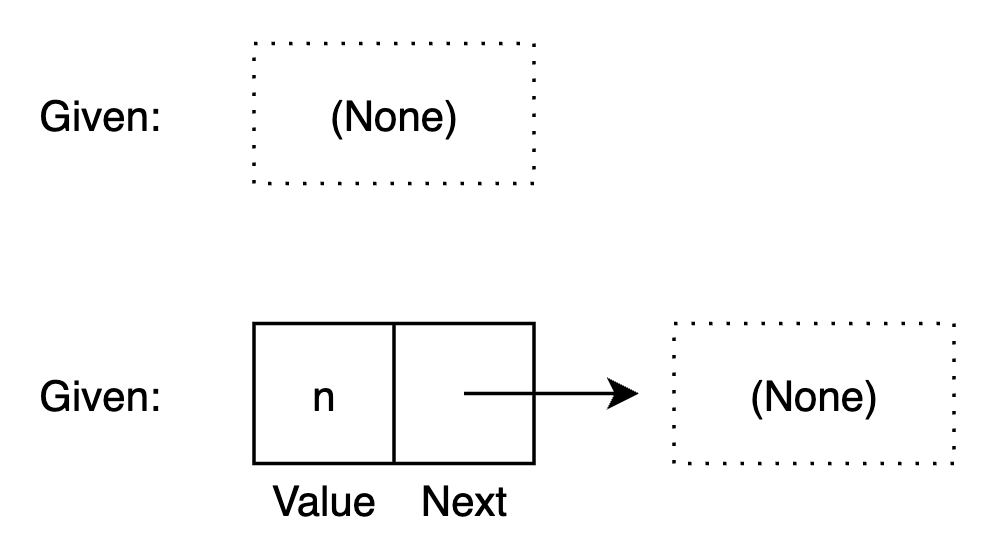

昨天問到,若 input 為 [1,2,3] 那麼 output 為 [2,1,3] 還是 [1,3,2] ?
我們使用 迭代/遞迴 來解這個題目



class Solution:
def swapPairs(self, head: ListNode) -> ListNode:
# 先儲存一個
dummy = ListNode(0)
dummy.next = head
current = dummy
while current.next != None and current.next.next != None:
# first 跟 second 儲存準備交換的 Node
first = current.next
second = current.next.next
# 先把 first Node 指向 second 的下一個Node
first.next = second.next
# 先把 second Node 指向 first 的下一個Node
second.next = first
# 先把 second Node 指向 即將變成第一個點的 second 的下一個Node
current.next = second
# 把 current 跳到 first 的位置
current = first
return dummy.next

我們需要輸出兩兩交換位置後的 linked list:

利用此遞迴關係,我們不斷將問題化簡成較短的 list ,直到 list 長度為 0 或 1 時,我們終於可以知道答案:
綜合以上發現我們可以列出遞迴關係式。為了方便表示,此處用一般的 list 進行表示,並且以 node_i+1 表示 node_i 所指向的下一個節點:

其中,前兩種 case 為終止條件,第三個 case 為遞迴關係。
有了遞迴關係式,我們便可以撰寫程式:
class Solution:
def swapPairs(self, head: Optional[ListNode]) -> Optional[ListNode]:
# head 指向第一個位置,若為空,則回傳 None
if head is None: return None
# second 指向第二個位置,若為空,則回傳 None
second = head.next
if second is None: return head
# rest 指向剩下的位置 (就是第二個位置之後)
rest = second.next
# 交換前 [head, second, rest...] -> 交換後 [second, head, rest...]
# 第二個指向第一個,第一個指向剩下的
second.next = head
head.next = self.swapPairs(rest)
return second
